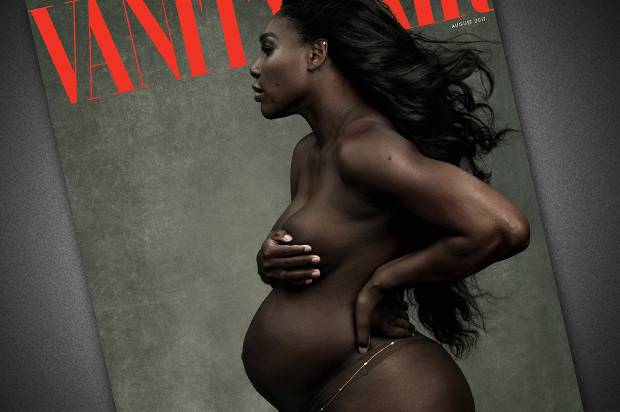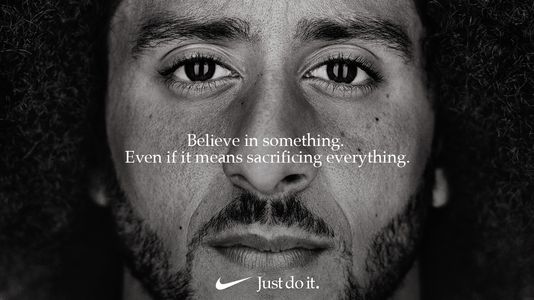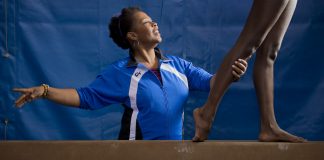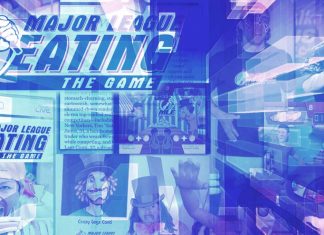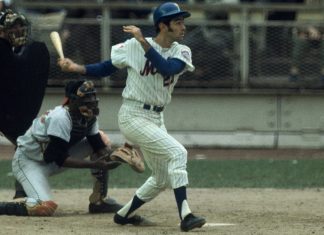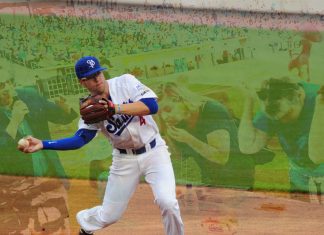In the wake of the Nassar case in gymnastics, there has been significant dialogue about safe sport, and measures needed to be taken in sports to protect all participants, especially the most vulnerable. So why do issues remain?
The gymnastics community was left in shock after Larry Nassar was sentenced to 175 years in prison for various acts of sexual abuse over the past twenty years. 163 athletes from both USA Gymnastics and Michigan State University provided heartbreaking testimony of the abuse they endured from the team doctor. But the overwhelming number of people who provided testimony does not account for the total amount of victims – over 350 girls and young women.
The overarching question that arose from the reckoning of Nassar, was “how on earth did this happen?”. Some answers have become known over the course of the Nassar case; how USA Gymnastics (USAG), and Michigan State University (MSU) encouraged victims to remain quiet, questioned their allegations, and even ignored the allegations entirely.
The slow action taken by coaches and leaders in the organization led people to question if children are really safe in sports, and what sport governing bodies are actually doing to ensure kids remain safe when entrusted to those in power. The reality is, as a whole, they’re not doing enough. This is especially concerning when we examine sports like gymnastics, and figure skating, who have a much lower average age of participants, often underage, leaving them more vulnerable to abuse.
With the #metoo movement gaining public traction in the last year, many high profile names have been subject to a public reckoning for their actions. This reckoning has fallen largely in the entertainment industry, with some allegations in other industries. The sports world has gone largely unscathed, with few allegations, none gaining as much attention as the Nassar case. It would be silly to believe that this simply means that the sports world is filled with wholesome individuals, as we know this is simply not the case, but for whatever reason, this industry has managed to keep things quiet. While there are a number of reasons we can look at as to why this is the case, I would argue that the biggest reason is that sports run on a culture of silence, where speaking out against authority is not only frowned upon and discouraged, it also can also cost you assignments, funding, and your career.
When I skated, I was taught at a very young age that my opinion was not necessary and that I should just keep quiet and do what I was told. Thankfully, this usually just meant that I had to do back-to-back run-throughs of my programs on all my sessions (something I hated). But this cultural norm becomes serious when the consequences are as serious as the Nassar case. In the sports where the average age is typically well underage (I would estimate that the average female figure skater ends her career at age 22), this leaves advocating for oneself largely on a child’s small shoulders. Children are vulnerable people, and will trust anyone who they are told to trust. Often, coaches are former champions themselves, creating a God-like complex. It’s scary to speak out against a parent, let alone a person paid to make you a better athlete. There is an assumption that they know what they’re doing, even if deep down, a child has a gut feeling that something is off. This is echoed in the report produced by Ropes and Gray, commissioned by the United States Olympic Committee, post-Nassar, which found the following:
“Numerous features embedded in elite women’s gymnastics render the sport conducive to child sexual abuse, including: (i) the overwhelming presence of children in the sport; (ii) the physicality of the training environment; (iii) strict expectations of obedience and deference to authority; (iv) the normalization of intense physical discomfort as an integral part of the path to success; (v) the exclusion or discouragement of parental participation; (vi) the social isolation of many elite gymnasts; and (vii) the presence of numerous powerful incentives for elite gymnasts to toe the line and avoid “rocking the boat.”
A consistent theme with the people who have fallen from grace with reprehensible actions such as Nassar’s, is that these people are often well-respected, even idolized in their positions. This leaves people to mistakenly group together the ability of someone’s professional career with their character as human beings. But these people answer to someone, and this is where sport governing bodies come into the picture. What role do they have in ensuring that the children involved in their sport remain safe, not only from physical injury, but from risks from others in the sport? It’s worth discussing the role governing bodies have in ensuring the people involved in the sport, instructing future champions, and recreational users that their safety matters above all?
There is the obvious example of how USAG handled the Nassar case, with failing to take seriously the various complaints from gymnasts about Nassar’s actions. The Ropes and Gray damning report states that:
“During the period from Nassar’s announced retirement in September 2015 to the Indianapolis Star article exposing Nassar a full year later in September 2016, no effective action was taken by USAG or the USOC to protect vulnerable children and athletes from the ongoing threat posed by Nassar.” (p.96)
Steve Penny, of USAG, wrote notes to himself that demonstrate that he did not want to make a formal complaint against Nassar, and no formal investigation, with the intention of sorting through this in a respectful and private manner to resolve the issue to everyone’s satisfaction. Penny resigned early in the Nassar case.
There was inaction from Alan Ashley, the United States Olympic Committee Chief of Sport performance (USOC) – 13 ½ months to be exact, after learning about the sexual abuse allegations against Nassar. He was fired for such inaction.
U.S Centre for SafeSport, an independent governing body in the US for all sport, recently suspended former 2-time US National pairs champion, John Coughlin’s, eligibility to participate in sport. Coughlin has been largely involved in skating after his retirement from competition, as brand ambassador for John Wilson Blades (he has now resigned), and providing commentary, and sat on a number of boards in the sport. After reports of his suspension became public, Coughlin, 33, tragically took his own life. This tragedy left the skating world at a loss; deeply saddened by the loss of a big personality in the sport, but still shocked at the allegations levied against him. While no one knows the perfect response to such a layered, tragic situation, the SafeSport investigation remains at the core of this tragedy, with questions on how it will continue - if it will continue at all. If the SafeSport investigation were not to continue, it would be a disservice to all those involved seeking answers, and closure.
In the wake of this story, USFS had few comments; sending condolences via Twitter, and commenting that there would be “no further comment until a later time”. At the time these allegations were first made public, it took USFS nearly 24 hours to respond, only by saying that it is not at liberty to discuss the case. This is not the first time that USFS has failed to act appropriately following allegations of wrongdoing against one of its skaters.
Richard Callaghan, who famously coached Tara Lipinksi, was recently banned from the sport, 20 years after allegations began. The NY Times first reported on these allegations in 1999, where it detailed a former skater, Craig Maurizi’s claims of sexual abuse, and abuse of power. While SafeSport does not go into detail as to why he was banned, there were whispers in skating dressing rooms for years of his inappropriate conduct with his male students, eventually leading 3 students to publically speak out against him in the Times. Maurizi specifically filed a grievance against Callaghan with USFS after he publically made the allegations; they dismissed the grievance, as it was not filed within the 60-day requirement. Though officially retired, Callaghan continued to coach up until the suspension, at a skating clinic owned by his former student, Todd Eldredge.
As we have seen in many examples across media with the #metoo movement, society continues to excuse poor, damaging behaviour if the results appear to outweigh it. This leads to the idea that results, and winning is more important than wellbeing, especially the wellbeing of a child. It is something that has been called out repeatedly by activists, and athletes such as Aly Raisman, have used their platform to bring attention to the issues within their sport.
While it is not perfect, at least the US has created the U.S. Centre for Safe Sport, which has exclusive jurisdiction to investigate reports of sexual abuse, and other forms of abuse in sport. Having an independent body investigate these claims helps to lend an arm of impartiality, which is important when investigating names beloved to the sport. SafeSport produces lists of people who are not allowed to work officially for Sports Governing bodies, such as USFS, as officials or coaches. While this list is useful if you know it’s there, when it trickles down to the clubs who are on the ground of the sport, they rarely enforce this list – whether intentionally, or not intentionally. Many of these sporting organizations lack the funding to enforce these rules, others are simply negligent in not even producing their lists.
In a Ropes and Gray report also found that the Corporate Structure of Sport in the US made it difficult to report on cases, overly formalizing the process, which in turn discouraged people from coming forward. Further to this, their policies were not properly communicated to the wider community, making it effectively ineffective.
“Even as USAG developed new policies designed to protect gymnasts, however, the organization did not draft comprehensive, internally consistent protocols, which resulted in a patchwork of policies that, as written, did not reflect a child-centric focus.” (p.176)
Canada is much worse, with no overarching, third-party Safe Sport governing body comparable to the model in the United States. This leaves safe sport policies in the hands of the national sporting federations, who have limited funding for starters, and even fewer policies in place to protect children in their care. In addition to this, the absence of a safe sport organization which is separate from the governing bodies, makes the launching of investigations, and the investigations themselves ineffective.
Further to this, while some sport governing bodies in the States publish the lists of coaches and others banned from their sport accessible on their sites, or at the very least, accessible on the Safe Sport site, there is no such database in Canada that contain the names of coaches and other who have been banned from the sport. Further to this, sport in Canada relies extensively on volunteers, making it more difficult to monitor and ban people from participating.
For example, until recently, Skate Canada did not even require a background check to volunteer at their national and international events – event of which have a significant number of underage participants. I know this first hand, from having volunteered at a number of their events. Canada has recently faced a number of issues of inappropriate behaviour of coaches, and culture in gymnastics, wrestling, and swimming. While the Minister of Sport in Canada, Kirsty Duncan is the “health and safety of athletes”, and is encouraged that athletes of Wrestling Canada called for a third party organization to oversee safe sport in the country, it remains to be seen if these recommendations will be implemented.
All of the above make it difficult for parents and other patrons of the sports their involved in to do what they can to ensure safety. It is difficult to know who you can trust with your sporting future, when there are no resources other than the word of mouth to know who is safe. We need to do better. Until we do better, it will be impossible to stop actions similar to those found in Nassar. Until the safety of children and others in sport are taken seriously, sport will continue to have a number of risks outside of the game itself.



